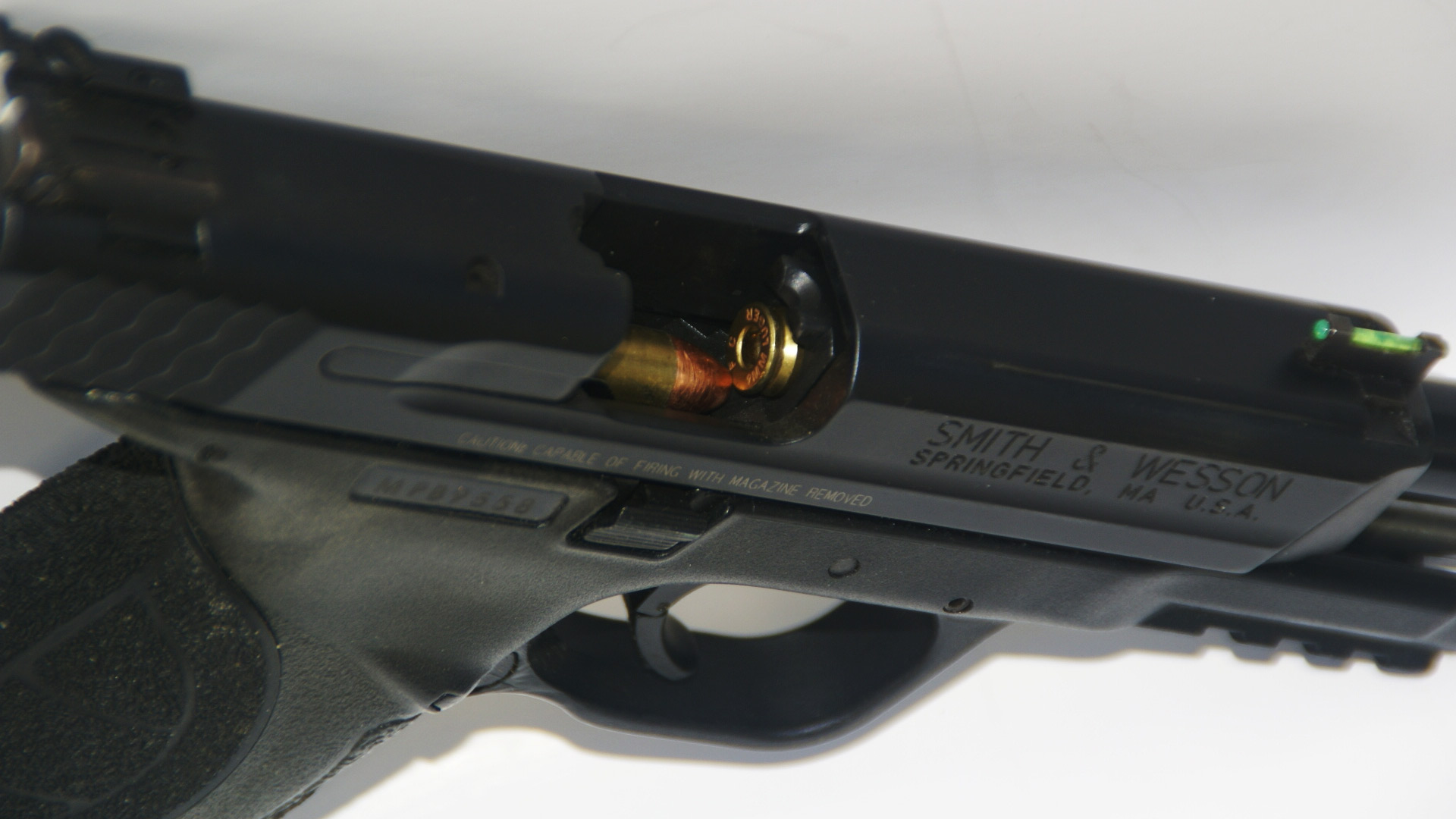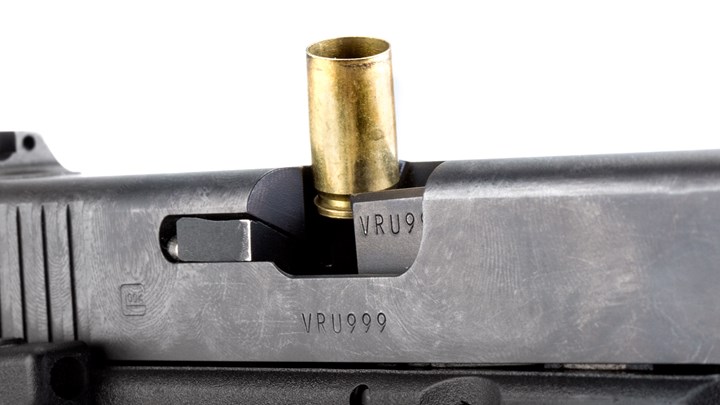How To Clear A Pistol Jam
Semi-automatic firearms, from center-fire pistols and pistol quotient carbines to rimfire rifles and pistols, predominate in activeness shooting sports. And every one of them can, and likely will, malfunction at some point—especially if the clock is ticking.
Malfunctions are not always the fault of the gun itself. Semi-automatic operating systems consist of iii key components—gun, magazine, and ammunition. If one of those components fails, a malfunction will occur. Here are the four most mutual malfunctions, how to apace clear them and what might be addressed to forbid them in the future.
Double Feed
This malfunction sees a round fed into the sleeping room, but with a 2d round jumping from the magazine and jamming in tightly behind it. This leaves the slide/bolt jammed behind, or sometimes on top of the second round and locks the gun up tightly.

This double feed jam will lock the gun up tightly and requires that the magazine be forcefully stripped from the gun to articulate it.
The just style to clear this jam is to get the magazine out of the gun. And with it tightly locked up, merely hitting the magazine release push doesn't work. The mag needs to exist physically stripped from the gun. Rip the magazine out, rack the slide to articulate everything in the gun, slap in another mag, chamber a round and go along through the form of fire.
Usually, this is non a gun or ammunition issue. The most common cause is worn mag feed lips that let a circular to jump gratis during normal cycling. A weak mag spring that allows rounds to bounce around in the magazine under recoil can besides contribute.
The Tip Up
This malfunction is characterized by a round feeding from the magazine towards the chamber, but failing to find it and winding upwardly with the bullet'south tip jammed up into the barrel hood. Similar to the double feed, the quickest mode to clear this jam is to strip the magazine, rack the slide to clear the action, slap in a new mag, chamber a round and go. Trying to "diddle" a tipped upwards round into the chamber is a futile and time-consuming exercise.

A tip up jam is best cleared in the same style as the double feed. It's a waste of precious seconds to effort and diddle that errant round into the chamber.
Worn magazine lips are a common cause. That'due south one reason why savvy competitors number their magazines for easy identification. If one number is involved in a lot to double feed or tip up jams, information technology's time to gear up it aside for repair or replacement.
But magazines aren't the simply culprit here. Handloaded rounds that are over or under the proper overall cartridge length for the gun can also cause tip up, as can a damaged butt feed ramp.
With rimfire rifles, another crusade can be an activeness gunked upwardly with old lube and pulverisation fouling. This tin can slow the forward bolt speed, alter the chambering rhythm, and ship the circular off target— especially if one is shooting standard velocity (i,070 f.p.southward.) loads.
Smokestack
This malfunction occurs when a fired instance is properly engaged by the extractor, rides back with the slide/bolt, only fails to hit the ejector with plenty force to boot it out of the gun. The fired example and so winds upward jammed between the slide/bolt equally the activity closes. In a center-fire semi-automatic handgun, it often sticks directly up, looking for all the world like a little smokestack—thus the name. (Also known as a stovepipe.)

A smokestack jam can be quickly cleared. Merely it's important to bank check the chamber to be sure it'south empty, or a double feed tin can occur.
The quickest fashion to articulate this jam, with pistol or long gun, is to cant the ejection port sharply towards the ground, retract the slide/bolt forcefully to free the trapped case, and and so rapidly expect into the chamber earlier releasing the slide or bolt.
The reason for the chamber check is that, on rare occasions, a round may have made it into the chamber due to forward bolt momentum. That leaves the chamber occupied, and releasing the slide/bolt will feed a new round and create a double feed jam. If the sleeping accommodation is occupied the near effective option is to eject the mag, and so drop the slide to appoint the chambered circular, slam in a new mag and become.
Smokestacks are commonly acquired by under-powered armament that didn't provide enough force to strike the ejector properly, whether factory or handloads. With a handgun, it tin too be a weak (limp wrist) grip. Another possibility is a dirty operating action that impedes slide/bolt travel (specially in rimfire rifles). If the problem persists, it could also exist a damaged ejector or extractor.
The Click
The gun cycled properly. But when the trigger is pulled there's a click instead of a bang. The immediate drill is the Tap & Rack—tap the base of the magazine to assure it'south properly seated, and then rack the slide to clear the chamber and send in a new circular. The most common cause is a dead primer or high-seated primer. Sometimes an improperly seated magazine can cause the slide/bolt to ride over the round in the magazine and fail to bedchamber it, thus the demand for the tap.
Simply, there is ane large caveat to the Tap & Rack.
If the click was accompanied by a poof or dull thud—or if you lot saw an empty example ejected from the gun—STOP! This is a articulate sign of a squib load that has left a bullet in the butt. The barrel must be checked before any further shooting.
Malfunctions will occur, and they will eat upward time on the clock. The quicker they can exist safely cleared, the less damaging they volition exist to the shooter'southward score.
Read more than: What Are The Differences Betwixt A Squib Load, A Misfire And A Hangfire?
Source: https://www.ssusa.org/content/how-to-clear-4-common-semi-automatic-malfunctions/

0 Response to "How To Clear A Pistol Jam"
Post a Comment